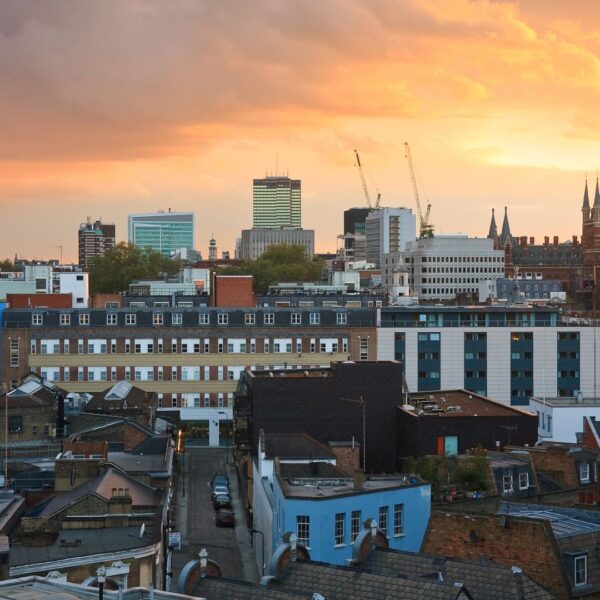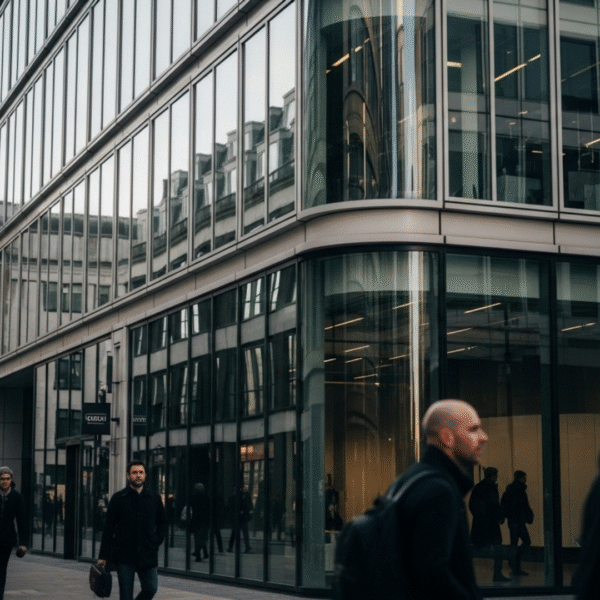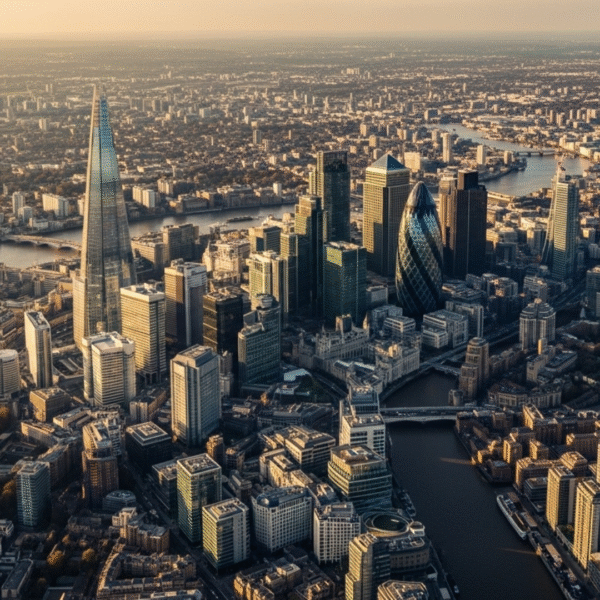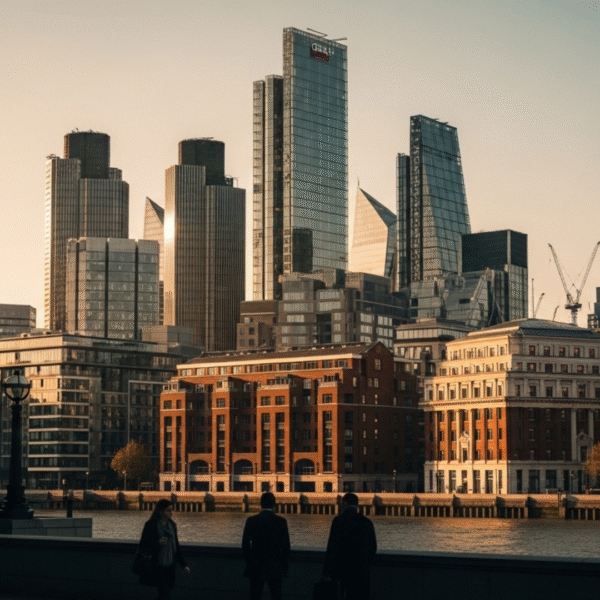In 2025 the retention battle is won in the office as much as in the offer letter. London teams are voting with their feet. When the workspace lowers friction and signals care, people stay. When it drains energy, they leave.
How severe is the UK retention crisis and what role does the office play?
According to Personio data, 48% of UK workers plan to quit in 2025, a figure that dwarfs the United States at 19% and Australia at 18%. With replacement costs starting near £11,200 and reaching £74,900 per leaver on 2024 averages, the financial impact is clear.
A Stribe report places average UK turnover at 35% each year. This isn’t just a numbers problem; it’s an environment problem. Only 10% of employees feel truly engaged.
Meanwhile, a Huddle Space article summarises evidence that employees in poorly designed spaces report 41% lower wellbeing and 53% lower perceived productivity.
Constant rehiring erodes margins and focus. That is why ADAPT treats the office as a retention investment. The space is not background. It shapes daily energy, momentum, and whether people believe they can do their best work together.
In London’s competitive market, a workspace that reduces friction and supports autonomy makes staying feel rational and valued.
The next step is to map the specific design choices that measurably lift retention intent and everyday performance.
How does office design measurably shift retention in 2025?
The retention crisis is not only cultural. It is architectural. Personalisation is a measurable lever. Employees who can shape their workspace show a 38% boost in retention intent. That is autonomy made visible.
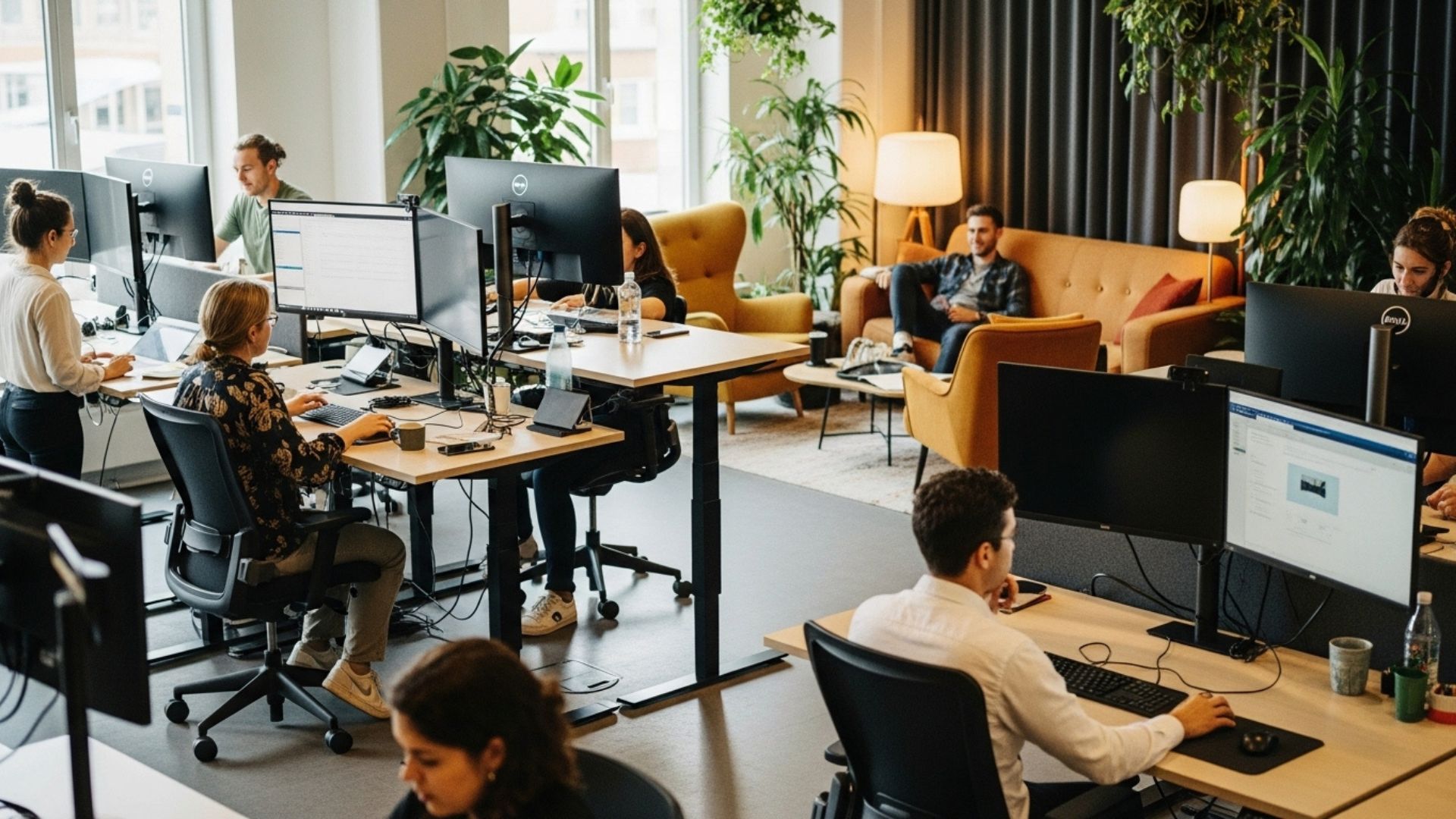
It signals respect and trust. Neuroinclusive adjustments matter too. Neurodivergent employees see a 29% retention lift and are 46% more likely to stay beyond two years when adjustments are provided.
Wellness features deliver compounding gains. Companies that add at least one wellness space per 30 people see a 19% retention improvement within 18 months. Natural light is a foundational variable.
Access can cut depression symptoms by up to 50% and increase productivity by 18%. Ergonomic layouts reduce musculoskeletal issues by 60% and produce a two-to-one return.
Next we show how targeted investments turn these design choices into hard retention ROI with a London case study and clear savings.
How do targeted workspace upgrades convert to measurable ROI?
Retention ROI shows up fastest where design matches how people actually work. A London tech startup cut turnover by 28% in six months after introducing zoned areas with focus pods and biophilic elements.
Mid-sized redesigns typically cost £75,000 to £120,000 and can save £150,000 or more in a year through a 25% turnover reduction. Activity-based environments lift job satisfaction by 17% and brand-aligned offices increase team loyalty by 23%.
What are the high-impact levers you can deploy now?
The most effective workspace changes arebehavioral. They align layout and materials with how people focus, collaborate, and recover during the day. The right interventions don’t just look modern; they compound across retention, productivity, and brand perception.
Here are four levers that consistently deliver measurable gains:
- Create activity-based zones to match focus and collaboration rhythms for a 17% satisfaction lift
- Upgrade acoustics to reduce cognitive errors by 28% and protect decision quality
- Translate your brand into materials and wayfinding to improve loyalty by 23%
- Use modular furniture to reconfigure quickly as teams scale without adding floor space
The pattern is clear. Precise fit beats flash. Start with work patterns then invest in the few upgrades that move retention and performance together. Track churn, time to fill, regretted loss and quality errors to evidence gains.
Next we connect this design ROI to location and commute strategy to show how the full workplace equation secures long-term retention.
How ADAPT turns quit intent into keep intent

With a significant portion of the UK workforce eyeing the exit and high average turnover, the office is now a retention lever-not background. Poor design drains wellbeing and perceived productivity.
ADAPT’s 360° service helps fast-growing teams treat space as a strategic investment-sourcing flexible, culture-fit options and shaping them into environments that earn the commute and signal care.
We map work patterns and stay-interview insight, then curate flexible, off-market spaces that support activity-based work. Next, we orchestrate upgrades proven to lift retention: personalisation for visible autonomy; neuroinclusive adjustments; wellness space (1 per 30 people); natural light; ergonomic layouts and better acoustics; modular furniture; and brand-led wayfinding.
Our provider network and fixed-fee model speed selection and keep budgets focused on what pays back-lower churn and fewer errors. We set baselines for retention intent, wellbeing and perceived productivity, then track gains post-move or fit-out.
Outcome: precise fit over flash. Spaces that cut replacement costs by raising satisfaction, loyalty and performance together. With 20+ years in London flex, ADAPT turns design choices into retention ROI.
“Your office is your loudest culture signal. When space mirrors how people actually work, attendance becomes voluntary and loyalty follows-we just remove the guesswork and deliver a space that keeps your best people.” – Chris Meredith, ADAPT CEO & Founder
What can you do to get ahead of retention-by-design in 2025?
If engagement is slipping, churn is rising, or you’re stuck in a legacy lease that no longer fits how your team works-now is the time to act. Flexible, well-designed space doesn’t just work better. It keeps talent.
ADAPT can not only help you find a smarter, more flexible office (that fits your needs perfectly) but also set you up with the best possible solution for the future.
See how ADAPT helps companies turn flexible design into measurable retention gains.

